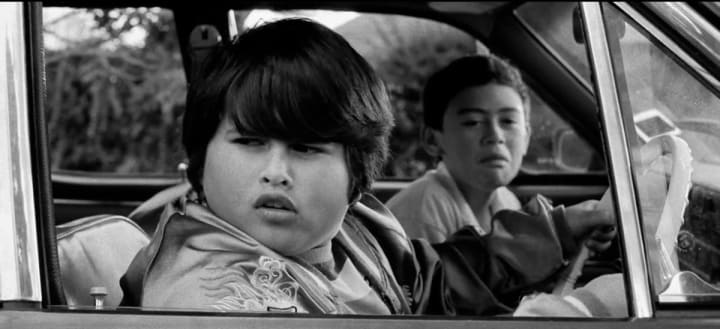Driving Stoned Experiment
Driving stoned is not the same as driving drunk, but it is still not recommended.

Uber changed the lives of stoners. As marijuana becomes more accepted as a lifestyle drug, so does driving stoned. The precedent for the driving stoned experiment was set in 1978 by Car and Driver . They staged the Great Carry Nation Memorial Drunk Off, which was an attempt to test objectively the effects of alcohol on driving ability. That test broke new journalistic ground. Real live people familiar to millions of readers, drank real booze, had their blood-alcohol levels checked on a breath tester, and then performed a simple slalom test. The results were dramatic. Not unexpected, but very dramatic, and the original drunk-off story has been one of the most frequently requested articles from the archives of Car and Driver. First forays into the world of scientific research on the subject of driving stoned quickly revealed some problems. The biggest problem would be quantifying the high. In other words, how high is high, and when is a driver there? With booze, a blow into a breath meter and the degree of drunkenness, as determined by law, flashes on an app you can purchase online. The amount of alcohol in the blood is instantly determined. Not so with marijuana. The amount of tetrahydrocannabinol, or THC, the stuff in pot that makes you high, can only be determined by sophisticated blood tests, and even then there is no legal determination of what constitutes a “legally drunk” toker.
Second, while the concentration of alcohol is plainly printed on the outside of every bottle, the amount of THC in a joint unknown. We decided simply to buy an ounce from a reputable dispensary and get on with the driving stoned test.
The rationale was simple. Since specific-strength THC was unavailable, and since there is no medical or legal basis for determining how high is high anyway, journalists from a number of underground counterculture magazine in the 1980s attempted a Car and Driver inspired test. They simply smoke and drive and tell what they did, thought, felt, and concluded.
Methodology

Image via Adweek
It is easy to design driving tasks that test basic abilities for drinkers. Not so with marijuana. No one knows exactly what happens, what is impaired, so there was no standardized test they could copy. They used a 1980 Chevrolet Citation two-door four-speed through a slalom course to test dexterity, and a lane change to test reaction time. The slalom course used nine pylons set 75 feet apart. The lane-change test was patterned after a General Motors test. There would be five sets of driving stoned runs per driver, two runs per set. Each driver in the test established his base-line time with three runs through the slalom course. Since time played no factor in the lane-change test, three practice runs were simply a learning experience. To equalize each driver's high during each run, the first smoker would begin the testing with two hits on a joint. He would wait about five minutes before moving to the car for his driving test. As he started his test, the second smoker would then take his two hits, and so on.
The Test

Image via Last Resistance
First driving stoned, tester reported a heightened perception of colors and proceeded to whip through the two driving tasks two-tenths faster than his base time. No way of knowing he's a bit high. Second driver’s lane changes were late and abrupt, but he didn’t hit pylons. On the slalom he was a touch quicker on average, and found the changes of direction “quite enjoyable.” On the way back to the test base he missed couldn't find the return road. The third and fourth drivers recorded similar behavior
For their second runs all four report being more stoned. In fact, they were all really buzzed. Driver one was again smooth on the slalom, nicely catching a slide at one point, but reported indecisiveness. Ironically all the drivers did marginally better on their second runs.
On their third runs, some differences in tolerance, began to show up. Everyone got a bit sloppy. Way too much giggling was heard over the communication systems. Pylons were crushed and drivers started backing up to replace it, hanging out the door, apparently caught up in the chaos wrought in the brain. The fourth runs were uneventful. The drivers were quiet and acted remarkably unstoned. The had plateaued. So they all went back for one more stoner session before their final run of controlled chaos. The test was over when it was obvious the subjects were as high as they could get yet showed no significant impairment when driving.
Conclusions

Image via HuffingtionPost
Dr. Alan C. Donelson was an assistant research scientist specializing in drugs and their effects on driving at the Highway Safety Research Institute in Ann Arbor. Donelson is a scientist, and scientists tend to have little patience for laymen dabbling in their disciplines, creating a body of statistically unsupportable data, and proffering it as valuable research. Surprisingly he said the driving stoned tests were consistent with those of other closed-course studies-in other words, no impairment in driving. Donelson said, there is very limited statistical proof that marijuana impairs driving ability. “It’s a muddy area,” he said, “due to a lack of accepted analytic methods.” He went on to say there is very limited data in general to suggest that any drug besides alcohol causes traffic accidents, mostly because of the difficulty in determining the presence of drugs in a driver's system. “And it's further complicated because most people use drugs in conjunction with alcohol.” Was it the booze or the drugs? “But that doesn't mean the problem isn't there,” Donelson said. “It’s just that no one has officially proved it.” Common sense says, that driving under the influence of marijuana is not wise. Yet your own experience may duplicate scientific tests, revealing no difficulty in driving, no deterioration in driving skills. But that does not mean you can drive stoned. The best advice is Uber or a designated driver. That’s the (suspected) insidiousness of dope. “Psychomotor coordination is not impaired by pot, but judgment apparently is. The driving task is simple, so with no impairment such as alcohol provides, there is relatively no problem in completing it successfully. But subtle effects may cause crashes and there is no question that prolonged use can alter perception. Information processing is impaired to some extent. Sensory information may be getting in, but it isn't being processed the same as when one is not stoned. It's part of that altered sense of time most smokers experience.”
About the Creator
Johnny Hash
Born in Kingsland, Arkansas. Spent way too much time watching TV. Daily toker. Still in Kingsland, Arkansas.






Comments
There are no comments for this story
Be the first to respond and start the conversation.